How to Survive a Flood

The Ultimate Guide to Surviving a Flood
Water engulfs us on all sides, posing a grave threat. Evacuate to a secure location, but proceed cautiously, whether on foot or behind the wheel.
Water is essential for life, yet an excess can be catastrophic.
The most devastating natural disaster in history was a flood: following a two-year drought in China, a combination of heavy winter snowfall and unrelenting rain in 1931 led to catastrophic flooding that claimed four million lives.
Similarly, the people of Houston learned the hard way in 2017 when Hurricane Harvey struck their city. Even as the waters began to withdraw, many dangers remained, including fallen power lines and health risks posed by the overflow of sewage and septic systems.
What is a Flood?
A flood is a natural disaster characterized by overflowing water onto land that is usually dry.
This can occur for various reasons, including heavy rainfall, melting snow and ice, breaching dams or levees, or a sudden release of water from an ice jam.
Floods can vary in size, duration, and impact, ranging from minor inconveniences to catastrophic events that lead to widespread destruction, loss of life, and significant economic damages. They can affect communities, agriculture, infrastructure, and the environment, leading to immediate and long-term challenges for the affected areas.
Floods are also influenced by geographical features, climate conditions, and human activities, such as urban development and deforestation, which can exacerbate their frequency and severity.
Introduction to Flood Survival
Diving into flood survival, it’s crucial to start at the very foundation—understanding the risks associated with flooding and recognizing the immense value of preparation. Whether you reside near a water body or in an area seldom touched by floods, the whims of nature spare no one.
Understanding the Risks of Flooding
Floods are deceptive disasters; they can creep up silently or burst forth with little warning. Here’s what you need to keep in mind:
- Property Damage: From structural to personal property, water shows no mercy. The force can compromise buildings, while stagnant water breeds mold and decay.
- Health Risks: Contaminated water is a cocktail of bacteria, chemicals, and waste that poses serious health risks.
- Disruption of Services: Electricity, water supply, and communication networks may be severed, leaving communities isolated.
- Environmental Impact: The ecological balance can be thrown off-kilter, affecting wildlife and natural habitats.
Importance of Being Prepared
Now, why is preparation non-negotiable? Simply put, it’s your shield against the unpredictability of floods. Here’s how you can fortify your defenses:
- Knowledge is Power: Understand your area’s flood risk. Familiarize yourself with local evacuation routes and have a family emergency communication plan.
- Emergency Kit: Assemble a kit with essentials—water, non-perishable food, medications, flashlights, batteries, and important documents sealed in waterproof containers.
- Stay Informed: Monitor weather forecasts and heed warnings from local authorities. An early heads-up can be the difference between safety and peril.
- Home Preparation: Elevate utilities and waterproof your basement if possible. Simple actions can mitigate damage.
Expert Tips for Flood Survival
- Act Early: When evacuation orders come, don’t hesitate. Your safety is paramount.
- Avoid Flood Waters: Never attempt to walk, swim, or drive through flood waters. They are often deeper and faster-moving than they appear.
- Stay on High Ground: In emergencies, move to higher ground or the highest floor of a sturdy building.
- Community Strength: Connect with neighbors. A community that’s prepared can work together effectively in times of need.
Remember, while floods are a formidable force of nature, our preparedness and response can significantly lessen their impact. Taking these steps doesn’t just prepare you for floods; it builds a resilience that extends beyond, helping you navigate various emergencies life might throw. Stay safe, stay informed, and never underestimate the power of being prepared.
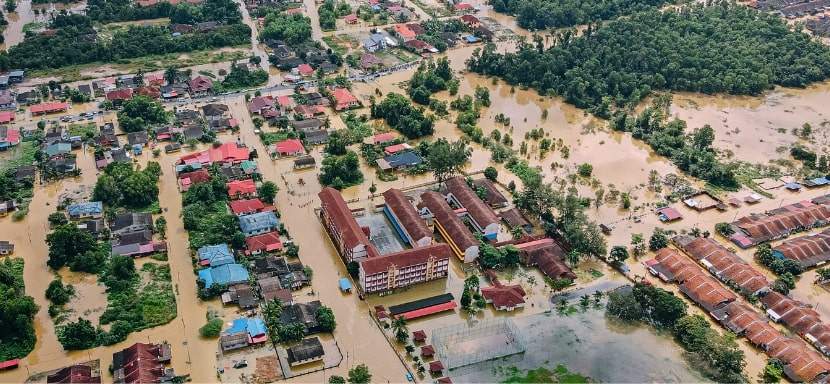
Before the Flood: Be Prepared
As we navigate the journey of flood survival, laying the groundwork before the flood is akin to setting the sails right before a storm. It’s about being proactive, not reactive.
Let’s explore how to anchor yourself securely with the preparation that stands the test of nature’s fury.
Creating a Comprehensive Emergency Plan
Having a plan is like having a map of an unknown territory—it guides you when the way isn’t clear.
- Family Communication: Establish a communication plan with your family. Decide on a meeting spot outside your home in case of separation.
- Evacuation Routes: Know your local evacuation routes. Practice them.
- Special Needs: Consider the needs of elderly family members, pets, and those with disabilities.
Building an Emergency Kit: Essentials You Need
Your emergency kit is your survival box. Think of it as packing for a very unpredictable trip.
- Basics First: Water (one gallon per person per day for at least three days), non-perishable food for three days, flashlight, and extra batteries.
- Health and Safety: First aid kit, medications (seven-day supply), and personal hygiene items.
- Essential Documents: Copies of insurance policies, identification, and bank account records in a waterproof container.
Understanding Flood Warnings and Alerts
Staying ahead of the game means knowing when the game is on.
- Sign Up for Alerts: Use your local government or weather apps to receive real-time alerts.
- Know the Terms: Understand the difference between flood watches and warnings. A watch means flooding is possible, while a warning means flooding is occurring or will occur soon.
Securing Your Home and Property
Your home is your fortress. Here’s how to strengthen its defenses:
- Water Barriers: Use sandbags around doors and low-lying areas to prevent water ingress.
- Raise and Anchor: Elevate electrical panels, sockets, appliances, and heating systems. Secure outdoor furniture to prevent it from being washed away.
Flood Insurance: Is It Necessary?
In a word, yes. Here’s why:
- Standard Home Insurance Isn’t Enough: Most standard policies do not cover flood damage.
- Peace of Mind: It can save you from financial ruin, offering a safety net when needed.
Did You Know?
Two-thirds of fatalities in floods are vehicle-related, when people try to drive through flood waters and get trapped.
During the Flood: What to Do
In the heart of the storm—during the flood—it’s crucial to remain calm, focused, and ready to act. This phase involves making real-time decisions that could differentiate between safety and peril.
Here are some actionable strategies to navigate through the rising waters.
Immediate Steps to Take When Water Levels Rise
When you see water levels starting to rise, every second counts. Here’s what to do:
- Disconnect Utilities: If it is safe, turn off electricity, gas, and water to prevent damage and reduce the risk of electrocution.
- Secure Important Items: Quickly move valuables, important documents, and electronics to higher ground within your home.
- Prepare to Leave: Even if an evacuation hasn’t been ordered, pack essentials in case you need to exit quickly.
Evacuation: When and How to Safely Leave Your Home
Evacuation is a critical decision. Knowing when and how to evacuate can safeguard your well-being:
- Heed Official Orders: If evacuation orders are given, follow them immediately. Authorities have information you might not be privy to.
- Safe Routes: Use the evacuation routes you’ve familiarized yourself with. Avoid waterlogged paths.
- Stay Together: Keep your family and pets together. If you must leave someone behind, notify the authorities immediately.
Staying Informed Through the Crisis
In the whirlwind of a flood, information is your lifeline:
- Use Battery-Powered Radios: Keep a battery-powered or hand-crank radio to listen to emergency broadcasts if the power goes out.
- Check Official Channels: Follow updates from local authorities on social media or via their websites.
- Communicate Wisely: Use text messages or social media to communicate with family and emergency services, keeping phone lines open for urgent calls.
Higher Ground
Aiming high in a floodwater situation is critical for several reasons, all of which boil down to safety and survival. Elevated areas are less likely to be affected by rising waters, providing a safer haven from the immediate threat of flooding. This is especially important because water levels can rise quickly and unpredictably, turning previously safe areas into hazardous zones. Being on higher ground reduces the risk of becoming trapped by rising floodwaters, which can carry dangerous debris and potentially harmful substances.
Moreover, seeking higher ground can improve visibility, allowing you to assess the situation more effectively and signal for help if necessary. It protects you from potential electrical hazards, as floodwaters can become electrified from downed power lines or damaged infrastructure. Aiming high in flood is a proactive measure that prioritizes your safety, offering a buffer against floodwaters’ unpredictability and immediate dangers.
Get Out of a Trapped Car
You’re trapped in your car, and the floodwaters are swiftly engulfing you, threatening to submerge the vehicle completely. Here’s how to escape:
1) Keep Calm: Panicking only squanders precious time needed to escape. Take a deep breath, gather your thoughts, and prepare to act decisively. Remember, you can make it through this situation.
2) Lower the Windows: Though it might feel wrong, lowering the windows is your best chance at escape. Opening a car door against rising water pressure is nearly impossible—even for the strongest among us. Act swiftly to lower the windows before the water level gets too high, which potentially turns off the power windows by damaging the electrical system.
3) Exit Through the Window: As water fills the car, pass through the window and onto the vehicle’s roof. Look for anything that floats—like a log—to cling to. It’s frightening, but staying put could lead to a far grimmer outcome. Escaping is about survival, even when faced with daunting choices.
Electrified Flood Waters
Beware of electrified water during and after a flood. Floodwaters can become charged with electricity from downed power lines or damaged electrical systems, posing a hidden but deadly threat. Even a seemingly calm expanse of water can carry a lethal current.
This invisible danger can hinder or even kill an individual upon contact, making it crucial to steer clear of standing water in flooded areas, especially if you’re unsure about the integrity of nearby power lines.
Always assume that water in flood-affected zones could be electrified and approach with the utmost caution.
Swim Backwards if in Floodwaters
Swimming backward in floodwaters, often called using the backstroke, is advised for several pivotal reasons. Firstly, it lets you keep your face upward and out of the water, ensuring you can breathe more easily and avoid ingesting or inhaling contaminated water. Floodwaters can carry a variety of harmful substances, including sewage, chemicals, and debris, making it crucial to minimize contact with the water.
Secondly, swimming backward gives you a better view of the environment above the water. This visibility is essential for avoiding obstacles, such as floating debris, submerged hazards, or electrical lines, which can pose significant risks during a flood. This technique also reduces the risk of collision with objects or being caught by underwater entanglements, as you can see, and hopefully maneuver away from dangers as they approach.
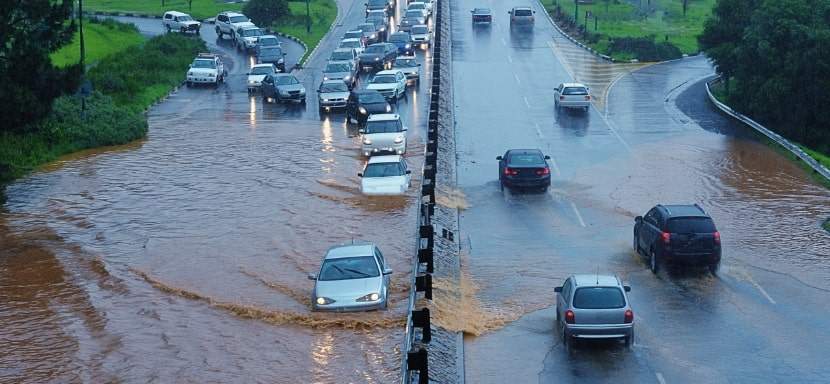
Turn Around Don’t Drown: The Lifesaving Mantra
One simple yet powerful piece of advice can save lives in the face of flooding: Turn Around, Don’t Drown.
This mantra emphasizes the critical importance of making the safe choice not to enter floodwaters on foot or in a vehicle. Despite seeming shallow or manageable, floodwaters can be deceivingly dangerous, hiding fast currents, debris, and road damage beneath their surface.
Here’s why adhering to this guidance is crucial:
- Unpredictable Depths: What appears as a minor puddle can be deep enough to sweep vehicles off the road. Water levels can rise rapidly, transforming roads into rivers.
- Hidden Hazards: Floodwaters can conceal potholes, debris, and even downed power lines, posing severe safety risks.
- Strong Currents: It takes only 6 inches of moving water to knock an adult off their feet and just 12 inches to carry away a small car. Underestimating the power of water can be a fatal error.
- Vehicle Control Loss: Vehicles can lose traction and begin to float in surprisingly shallow water, leaving drivers helpless to steer or escape.
After the Flood
Once the floodwaters recede and authorities deem it safe to return, the aftermath phase begins—a time for healing, rebuilding, and reflecting.
The aftermath of a flood can often seem as daunting as the event itself, but armed with the proper knowledge and resources, you can confidently navigate this challenging period.
Returning Home: Safety Measures
Before stepping back into your home, safety should be your paramount concern:
- Please wait for the Green Light. Only return home when authorities have confirmed it’s safe.
- Inspect with Caution: Check for structural damages from a distance. Do not enter if there are signs of foundation issues or other risks.
- Wear Protective Gear: Equip yourself with gloves, boots, and masks to protect against contaminants.
- Utilities Check: Ensure gas, water, and electricity are turned off before inspection. Have professionals evaluate and restore these services.
Cleaning Up Safely After a Flood
The cleanup process is critical and requires careful attention to detail to ensure safety and efficiency:
- Ventilate and Document: Open all windows and doors for ventilation. Take photos for insurance claims.
- Prioritize: Start with removing water and mud. Salvageable items should be cleaned, disinfected, and dried.
- Mold Mitigation: Address damp areas immediately to prevent mold growth. Discard items that cannot be thoroughly dried or cleaned.
- Professional Assistance: For extensive damage, consider hiring professionals to ensure thorough cleaning and restoration.
Dealing with the Emotional Aftermath of a Disaster
The psychological impact of a flood can be profound. It’s important to recognize and address the emotional toll:
- Acknowledge Your Feelings: It’s natural to feel a range of emotions. Allow yourself to grieve and process.
- Seek Support: Connect with community support groups or professional counseling. You’re not alone.
- Focus on Self-Care: Prioritize rest, nutrition, and activities that bring comfort and joy.
- Build Resilience: Use this experience to strengthen your preparedness for future challenges. Reflect on what was learned and how you can apply it moving forward.
Community and Support
The challenges of a flood don’t just hinge on individual preparedness; it’s also about the strength of our community and the support we can offer each other. A robust support network can transform the daunting journey of flood preparedness and recovery into a manageable, collective effort.
Building a Support Network for Flood Preparedness
- Connect with Neighbors: Start conversations with your neighbors about flood preparedness. Share information and resources, and consider forming a neighborhood watch or support group for disaster readiness.
- Leverage Local Resources: Engage with local emergency management offices, community centers, and non-profits. They often offer workshops, resources, and tools to help communities prepare for floods.
- Organize Community Drills: Practice makes perfect. Organizing community evacuation drills or flood response exercises can help everyone understand their role and actions during an event.
- Share Skills and Knowledge: Everyone has something to offer. Maybe you’re good at first aid, while your neighbor is an expert in amateur radio. Pooling and sharing these skills can make your community more self-sufficient.
Volunteering and Helping Others in the Aftermath
- Join Local Volunteer Organizations: Many organizations are active after a flood. By joining them, you can provide crucial support to affected individuals by distributing supplies, helping clean up, or offering emotional support.
- Offer Your Home or Resources: If you can, offering your home as a temporary shelter or sharing resources like tools and equipment can be incredibly helpful to those impacted.
- Be There for Emotional Support: The emotional toll of a flood can be heavy. Simply being there to listen and offer support can make a significant difference in someone’s recovery process.
- Stay Engaged Over the Long Haul: Recovery from a flood is a marathon, not a sprint. Staying engaged and offering support long after the initial impact can help ensure that no one is left behind in the recovery process.
Technological Aids in Flood Survival
Leveraging technology can significantly enhance our ability to survive and navigate through flood situations. From early warnings to maintaining communication with loved ones and authorities, technological aids play a crucial role.
Utilizing Apps and Gadgets for Flood Warnings and Safety
- Weather Apps: Install reputable weather apps on your smartphone. These can provide real-time alerts about flood warnings, allowing you to prepare or evacuate as needed.
- Flood-Specific Apps: Some apps are designed specifically for flood forecasting and updates. They use data from weather stations and satellites to warn you about potential flood risks in your area.
- Water Sensors and Smart Home Devices: Consider investing in water sensors for your home. These devices can alert you to the first signs of flooding, potentially saving your property from severe damage.
- Emergency Apps: Apps like FEMA or Red Cross have features for emergency preparedness, including customized alerts and a library of resources on responding during floods.
The Role of Social Media in Emergency Communication
- Real-Time Updates: Social media platforms can provide immediate information during disasters. Following local news outlets, emergency services, and weather agencies can keep you informed.
- Community Support: Social media groups dedicated to your local community can be invaluable. Members often share updates and advice and assist those affected by floods.
- Reaching Out for Help: In dire situations, broadcasting your location and situation on social media can alert others to your need for rescue or assistance.
- Sharing Your Status: Letting friends and family know you’re safe through social media can give them peace of mind during chaotic times.
Global Perspectives on Flood Survival
Navigating the treacherous waters of flood survival requires wisdom gleaned from past experiences and innovative approaches across the globe.
By casting our net wide, we can draw invaluable lessons and pioneering strategies from different corners of the earth, each offering unique insights into tackling the challenges of floods.
Lessons Learned from Major Flood Disasters Worldwide
- Preparedness is Key: Events like the 2005 Hurricane Katrina in the USA and the 2011 floods in Thailand underscore the importance of early preparation and robust emergency management systems.
- Community Resilience Matters: The 2010 Pakistan floods taught us the strength of community response. Local initiatives in rescue and relief efforts can significantly mitigate the impact of flooding.
- Nature-Based Solutions: The Netherlands’ approach to “living with water” rather than fighting against it through projects like the Room for the River shows the effectiveness of sustainable flood management practices.
- Infrastructure is Crucial: Japan’s extensive investment in flood control measures, including the Metropolitan Area Outer Underground Discharge Channel, highlights the role of infrastructure in minimizing flood damage.
Innovations in Flood Prevention and Survival Strategies
- Flood Barriers and Dams: Advanced engineering solutions such as movable barriers and ingenious dams that adapt to changing water levels are becoming more prevalent, offering dynamic protection against floods.
- Early Warning Systems: Countries like India and Bangladesh have implemented sophisticated flood forecasting and warning systems, leveraging satellite data and AI to predict floods days in advance.
- Urban Planning and Green Infrastructure: Cities like Singapore have integrated green roofs, permeable pavements, and urban wetlands into their planning, which help absorb rainwater and reduce runoff.
- Community-Based Flood Management: Grassroots movements in vulnerable regions have led to the development of community-operated warning systems and local knowledge hubs, empowering residents to act swiftly in the face of rising waters.
Environmental Considerations and Flood Mitigation
The environment is both our shield and our teacher. Embracing environmental considerations and flood mitigation strategies is about responding to the immediate dangers of flooding and proactively shaping a world where the impact of such disasters can be significantly reduced.
Sustainable living and community-based approaches are at the heart of this endeavor, offering individual and collective pathways to resilience.
Let’s explore how we can harness these strategies to fortify ourselves and our communities against the threat of floods.
Sustainable Living Practices to Reduce Flood Risks
- Rain Gardens and Bioswales: Implementing rain gardens and bioswales in your yard can help absorb rainwater, reducing runoff and the risk of local flooding.
- Permeable Paving: Permeable materials for driveways and walkways allow water to seep through, decreasing surface runoff.
- Water Harvesting: Collecting rainwater from rooftops conserves water and manages runoff, mitigating flood risk.
- Native Landscaping: Planting native trees, shrubs, and grasses strengthens soil and reduces erosion, acting as a natural barrier against floods.
Community-Based Approaches to Flood Mitigation
- Floodplain Restoration: Working together to restore natural floodplains can provide critical buffers, absorb floodwaters, and protect communities.
- Community Rainwater Management Projects: Initiatives like community gardens with integrated water management features can collectively reduce the impact of heavy rainfall.
- Awareness and Education Programs: Community-driven programs focusing on flood risk and sustainable practices empower residents to take proactive measures.
- Collaborative Infrastructure Projects: Participating in or advocating for developing green infrastructure, such as urban wetlands and green roofs, contributes to a community’s resilience against floods.
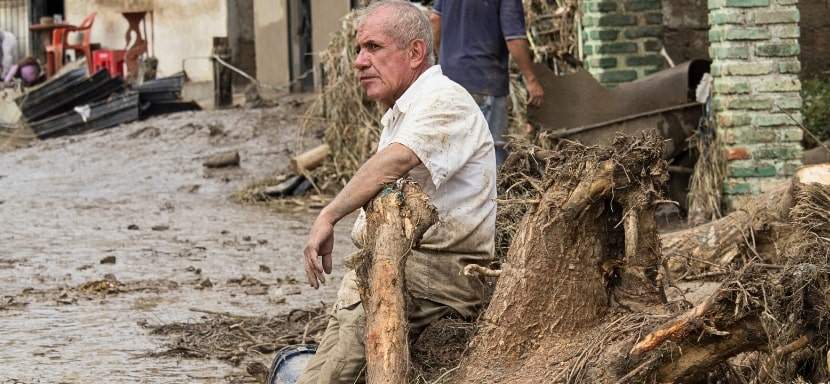
Legal and Insurance Aspects
As you begin picking up the pieces, it is crucial to navigate the often complex terrain of legal and insurance matters with confidence and clarity. Understanding the ins and outs of insurance claims and your rights and responsibilities can be the linchpin in your recovery journey.
Let’s break down some key strategies and tips to empower you through this critical phase, ensuring you’re well-equipped to handle the challenges that may arise.
Navigating Insurance Claims Post-Flood
- Document Everything: Before cleanup, photograph and document all damages. This visual evidence is vital for your insurance claim.
- Review Your Policy: Know what your insurance covers and what it doesn’t. Flood damage is often not covered under standard homeowners’ policies, so check if you have separate flood insurance.
- File Promptly: Contact your insurance company as soon as possible to start the claims process. Delays can complicate your recovery.
- Keep Records: Document all communications with your insurance company, including dates, names, and what was discussed. This record can be crucial in case of disputes.
Understanding Your Rights and Responsibilities
- Know Your Policy: It’s your responsibility to understand your insurance policy’s coverage and limitations. If anything is unclear, ask your insurer for clarification.
- Fair Treatment: You have the right to be treated fairly and to have your claim processed promptly. If you believe your claim is being handled unfairly, you can seek assistance from your state’s insurance commissioner’s office.
- Proof of Loss: You’re responsible for proving your losses. This means providing an inventory of damaged or lost items, with their value, to your insurer.
- Appeals: If your claim is denied or dissatisfied with the settlement, you have the right to appeal. Understand the appeal process outlined in your policy.
Rising Waters
Tropical Storm Harvey dumped 50+ inches of rain on Houston, Texas.
FAQs on How to Survive a Flood
What do you do if you're caught in a flood without warning?
- Seek Higher Ground Immediately: Your priority should be to move to higher ground or an upper floor away from rising waters.
- Stay Informed: Listen to emergency broadcasts on a battery-powered radio or your mobile device (if operational) for updates and instructions.
- Avoid Moving Through Floodwaters: If you must move, be very cautious. Floodwaters can hide dangers such as sharp objects, contaminated debris, and downed power lines.
- Signal for Help: If stranded, use a flashlight or brightly colored cloth to make yourself visible to rescuers.
How to purify water during a flood?
- Boiling: Boil water for at least one minute to kill bacteria and viruses. At higher altitudes, extend the cooking time to three minutes.
- Chemical Disinfection: Use household bleach (make sure it’s unscented and contains 5.25-8.25% sodium hypochlorite) by adding 1/8 teaspoon (about 8 drops) per gallon of water, stirring and letting it stand for 30 minutes.
- Portable Filters: Use a portable water filter to remove bacteria and viruses. Follow the manufacturer’s instructions for the best results.
Can pets be part of the emergency plan?
- Absolutely: Include pets in your emergency plans by ensuring you have a pet emergency kit ready, which includes food, water, a leash or carrier, and any medications they might need.
- Shelter Plans: Identify pet-friendly shelters or make arrangements with family or friends outside your immediate area who can shelter your pets.
- Identification: Ensure pets have up-to-date identification tags and microchips to help reunite with them in case of separation.
How do you recover emotionally and mentally after surviving a flood?
- Acknowledge Your Feelings: It’s normal to feel a range of emotions after such a traumatic event. Give yourself time to process.
- Seek Support: Lean on family, friends, and community resources. Consider talking to a professional counselor who can provide strategies to cope with disaster-related stress.
- Routine: Establish a new normal by maintaining or creating routines that provide comfort and stability.
- Stay Active: Engage in physical activity and hobbies that bring you joy and allow your mind to rest from the stress.
How do I flood-proof my home for the future?
- Elevate Electrical Systems: Raise electrical switches, sockets, and appliances above the expected flood level in your area.
- Install Backflow Valves: Install backflow valves on all pipes entering the house during floods to prevent sewage from backing up.
- Waterproof Basement: Use sealants to waterproof your basement walls and floors. Consider installing a sump pump with a battery backup.
- Landscape Wisely: Use landscaping to divert water away from your home naturally. Plant native vegetation and consider creating rain gardens.
- Consider Elevation: If feasible, elevate your home’s foundation if you live in a high-risk flood area.
Navigating Floodwaters: A Comprehensive Guide to Flood Survival and Resilience
As we conclude our journey through understanding how to survive a flood, it’s clear that preparedness, awareness, and community support form the cornerstone of navigating these challenging waters. From the initial steps of recognizing the imminent dangers of flooding to the crucial strategies for recovery and emotional healing post-disaster, each phase emphasizes the importance of being well-equipped and informed.
The path to flood survival is paved with proactive measures: creating emergency plans that include our furry friends, understanding the nuances of flood insurance, employing technological aids for real-time alerts, and learning from global perspectives on flood management. Moreover, embracing sustainable living practices and community-based mitigation efforts fortifies our immediate defenses and contributes to long-term resilience against future floods.
Recovery from a flood is as much about rebuilding homes and communities as it is about healing the emotional and psychological scars left in the disaster’s wake. By fostering a culture of preparedness, supporting one another, and adapting innovative solutions, we can enhance our ability to withstand and bounce back from flood challenges.
In navigating the floodwaters of life, let’s remember that our strength lies in our preparedness, unity, and unwavering resolve to rise above adversities, embodying resilience in the face of nature’s fury. Together, we can turn the tide, transforming vulnerability into a testament to our resilience and adaptability.
Little Known Facts About Floodwaters
-
Floodwaters Can Travel Faster Than You Think: Floodwaters can move at speeds exceeding 20 miles per hour, making them much faster and more powerful than they appear.
-
Just Six Inches of Moving Water Can Knock You Down: It might not seem like much, but just six inches of moving water is enough to make you lose your footing and potentially lead to severe injuries.
-
Floods Are the Most Common Natural Disaster in the U.S.: Despite the attention other natural disasters receive, floods occur more frequently than any other in the United States.
-
Flash Floods Can Bring Walls of Water: Flash floods can create walls of water 10 to 20 feet high, a terrifying phenomenon that can occur within minutes of intense rainfall.
-
A Single Car Can Be Swept Away by Just 12 Inches of Water: Vehicles can quickly become uncontrollable in just a foot of water, highlighting the dangers of driving through flooded areas.
-
Floodwaters Are Often Contaminated: Floodwaters can contain hazardous materials, including sewage, oil, chemicals, and other debris, posing significant health risks.
-
Floods Can Occur Anywhere: While certain areas are more prone to flooding, virtually no region is immune. Urban areas can experience “urban flooding,” where drainage systems become overwhelmed by heavy rain.
-
Mold Growth Can Begin Within 24 to 48 Hours After Flooding: The aftermath of a flood can lead to rapid mold growth in homes, posing health risks and complicating cleanup efforts.
-
Flood Damage Can Exceed Home Fire Damage: In terms of cost, flood damage often surpasses the damage caused by home fires, making it one of the most expensive natural disasters for homeowners.
-
Most Homeowner’s Insurance Policies Do Not Cover Flood Damage: Many people are unaware that standard homeowner’s insurance does not typically cover flood damage, necessitating the purchase of separate flood insurance.
The Top 10 Deadliest Floods in History
The history of civilization is punctuated by catastrophic floods that have claimed millions of lives, reshaped landscapes, and altered the course of societies.
Here are some of the most infamous floods recorded in history, ranked by their devastating death tolls:
- 1931 China Floods: Occurring along the Yangtze River, this is considered the deadliest natural disaster ever recorded, with death estimates ranging from 1 to 4 million people. The flood resulted from heavy snowfall, intense rainfall, and the Yangtze and Huai Rivers overflow.
- 1887 Yellow River (Huang He) Flood, China: This catastrophic event caused the Yellow River to overflow its banks, leading to widespread destruction and an estimated death toll of around 900,000 to 2 million people.
- 1938 Yellow River Flood, China: In an attempt to halt the advance of Japanese forces during the Second Sino-Japanese War, the Nationalist Government broke the Yellow River’s dikes. This strategic decision led to a flood that caused between 500,000 and 800,000 deaths.
- 1975 Banqiao Dam Failure, China: Triggered by Typhoon Nina, the failure of the Banqiao Reservoir Dam and subsequent collapses of other dams led to a catastrophic event that killed an estimated 171,000 people and displaced millions.
- 1557 Yellow River Flood, China: Another devastating flood of the Yellow River claimed the lives of around 900,000 people, showcasing the river’s tragic history of causing massive loss of life due to flooding.
- 1642 Kaifeng Flood, China: The deliberate breaching of the Yellow River’s dikes by Ming Dynasty rebels led to the flooding of Kaifeng, resulting in the deaths of around 300,000 people.
- 1935 Yangtze River Flood, China: This flood affected millions and killed approximately 145,000 people, with millions more displaced.
- 1911 Yangtze River Flood, China: Another devastating event on the Yangtze River led to over 100,000 deaths, highlighting the river’s history of deadly floods.
- 1959 Typhoon Vera (Isewan Typhoon), Japan: The deadliest typhoon in Japanese history led to catastrophic flooding, especially in the Ise Bay area, resulting in over 5,000 deaths and significant destruction.
- 2010 Pakistan Floods: Triggered by heavy monsoon rains, these floods affected about 20 million people, with a death toll of approximately 2,000. The scale of the disaster in terms of the area affected and people displaced was unprecedented.
These floods are sad reminders of nature’s power and the importance of disaster preparedness and management to mitigate the loss of lives and property.
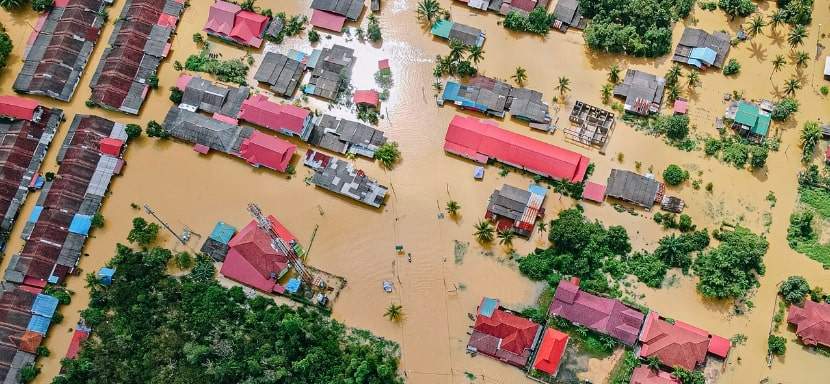
More Nature’s Wrath Scenarios
How to Survive a Wildfire
Wildfires are one of nature’s most unpredictable and destructive forces, and they can engulf entire…
How to Survive a Landslide
Landslides are one of nature’s sudden, unexpected acts, like finding a $20 bill in an old jacket, but far…
How to Survive a Hurricane
Hurricanes are nature’s way of reminding us who’s in charge—think of it as the weather throwing a…
How to Survive a Tsunami
Surviving a tsunami is a terrifying thought, but it’s something we should all be aware of, especially if we…
How to Survive a Lightning Strike
Thunderstorms are a mesmerizing display of nature’s power, but they also bring the terrifying threat…
Recent Survival Posts
How to Survive a Layoff
Layoffs feel personal—even when they’re not. One day, you’re responding to Slack messages and forwarding…
How to Survive a Drug Test
I never imagined I’d be so emotionally invested in a paper cup. But there I was, standing under the fluorescent…
How to Survive an Interrogation
If you’ve ever been caught in the crosshairs of an overly enthusiastic mall cop or stared down by someone…
How to Survive a Nightclub Shooting
Nightclubs pulse with life—lights flashing, music pounding, bodies packed tight on the dance floor. It’s a place to…
How to Survive a Bachelor Party
A bachelor party is a delicate mix of celebration, chaos, and questionable decision-making, wrapped…
More Nature’s Wrath Survival Scenarios
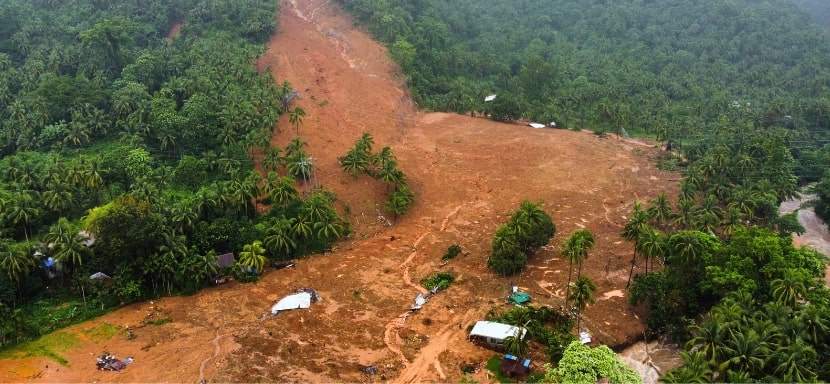
How to Survive a Landslide
Landslides are one of nature's sudden, unexpected acts, like finding a $20 bill in an old jacket—only there's no thrill of discovery, just destruction. They strike without much warning, sweeping away everything in their path—homes, roads, vehicles, and, tragically,...

How to Survive a Hurricane
Hurricanes are nature's way of reminding us who's in charge—think of it as the weather throwing a tantrum. The winds howl, the rain pours, and trees bend until they snap. But while hurricanes are frightening, surviving them is possible with good preparation, clear...
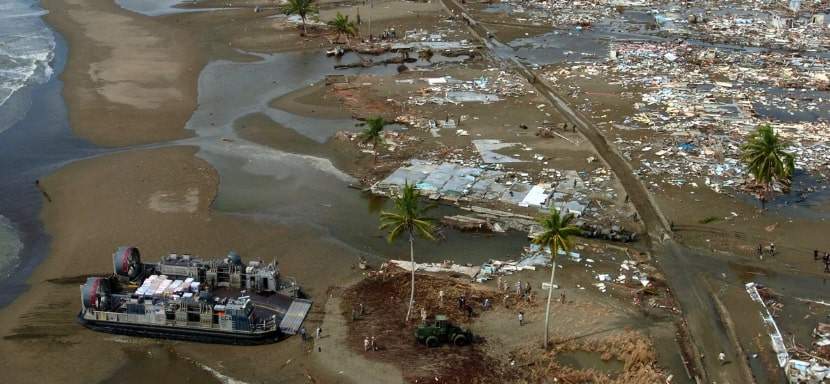
How to Survive a Tsunami
Surviving a tsunami is a terrifying thought, but we should all be aware of it, especially if we live near coastlines. A tsunami can strike with little warning, and the key to making it through alive is to know what to do before, during, and after the waves hit. Here,...
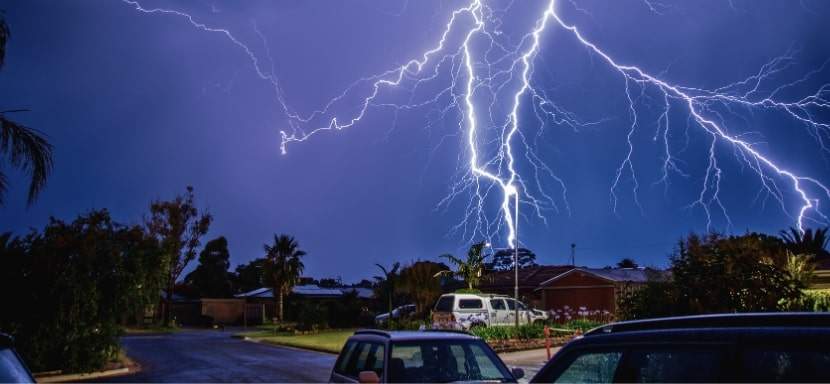
How to Survive a Lightning Strike
Thunderstorms are a mesmerizing display of nature's power, but they also bring the terrifying threat of lightning strikes. Each year, thousands of people worldwide are affected by lightning, with severe injuries and even fatalities resulting from these sudden...
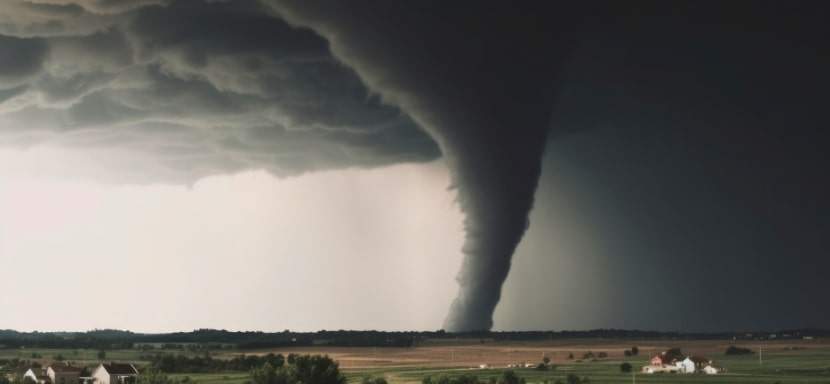
How to Survive a Tornado
Tornado Safety: How to Survive and Protect Your Family Learn life-saving strategies to protect yourself and your loved ones from the unpredictable fury of tornadoes. Tornadoes are among the most unpredictable and destructive natural phenomena. Their sudden and violent...
More Survival Scenarios

How to Survive a Layoff
When the Floor Falls Out: The Reality of a Layoff Layoffs feel personal—even when they're not. One day, you're responding to Slack messages and forwarding emails. Next, you're staring at your monitor as it logs you out... for good. Whether it's a restructuring, a...

How to Survive a Drug Test
The Cup, The Room, The Truth I never imagined I’d be so emotionally invested in a paper cup. But there I was, standing under the fluorescent hum of a strip-mall clinic, trying to recall the last time I ate a poppy seed bagel. That’s the thing about drug tests—they...

How to Survive an Interrogation
If you've ever been caught in the crosshairs of an overly enthusiastic mall cop or stared down by someone in a uniform with a clipboard and a glare, you’ve felt it — the chilly fingers of interrogation anxiety. And while most of us imagine interrogation scenes as...

How to Survive a Nightclub Shooting
Nightclubs pulse with life—lights flashing, music pounding, bodies packed tight on the dance floor. It’s a place to escape, feel the rhythm, and lose yourself in the crowd. But that same energy can turn deadly in seconds, transforming a night of fun into one of the...

How to Survive a Bachelor Party
A bachelor party is a delicate mix of celebration, chaos, and questionable decision-making, wrapped in the noble intention of sending the groom off into married life with a night he’ll (hopefully) remember. It’s a ritual as old as time—well, as old as men deciding...

How to Survive Your First Time at the Gym
Walking into a gym for the first time can feel like stepping into an alien world. The machines hum with purpose, the regulars move confidently, and you’re left standing there, clutching your water bottle, wondering whether you’re in the right place—or on the right...

How to Survive a Worldwide Communications Breakdown
Imagine waking up to silence. Your phone doesn’t buzz, your email won’t load, and even your local radio station crackles with static. A worldwide communications breakdown has hit. What next? For many, this doomsday scenario may sound like the opening lines of a...
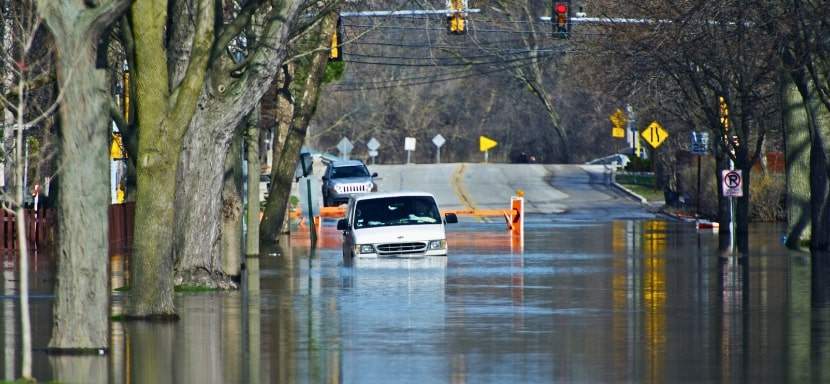
How to Survive a Flash Flood While Driving
Surviving a flash flood while driving requires quick thinking, calmness, and a solid plan to ensure your safety. Preparation can make all the difference between a close call and a catastrophe in emergencies like this. This guide provides practical advice to protect...
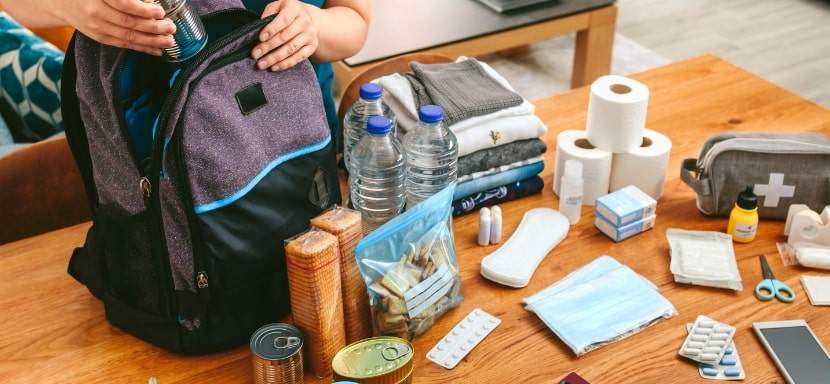
How to Build an Emergency Kit
Emergencies don’t knock politely at the door. They barge in, uninvited, like a distant relative with a penchant for drama, turning your world upside down without warning. Whether it’s a power outage, a natural disaster, or an unexpected evacuation, the key to staying...

How to Protect Yourself From Insects in the Wild
There’s nothing like being out in the wild—birdsong echoing through the trees, the fresh scent of earth, and a deep sense of peace that makes you think, “Ah, this is what life is about.” But then comes the buzzing. Mosquitoes, ticks, and flies swoop in like uninvited...
